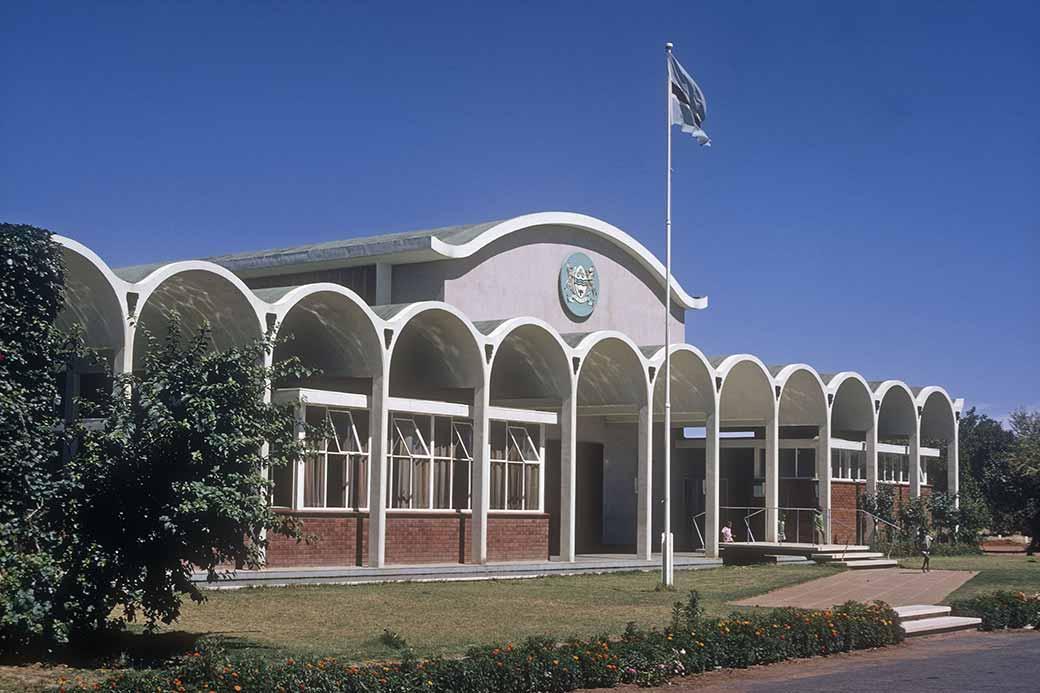Africa-Press – Botswana. The Agricultural Credit Guarantee Scheme (ACGS) was established in 1986 to assist arable rain-fed crop farmers with an insurance scheme meant to reduce their debt to financial institutions in the event of crop failure due to drought, hailstorm, frost and floods, says Minister of Entrepreneurship, Mr Karabo Gare.
Answering a question in Parliament on behalf of Minister of Agriculture recently, Mr Gare said the ACGS insurance cover was provided in return for a 10 per cent premium whereby the farmer paid five per cent and the financing institution also paid five per cent.
He said in the event of drought declaration and funds from premiums were insufficient to cover the claims, government guaranteed to cover up to 85 per cent of the installment due in that cropping year depending on the severity of the drought.
“The scheme offers farmers the option of obtaining loans to purchase farm machinery and equipment such as tractors, planters, cultivators, harrows, ploughs, crop spraying equipment and boreholes drilled specifically for domestic consumption at the farm, and not for irrigation,” he said.
The minister explained that since 1986 the scheme had satisfactorily met its obligations of paying financial institutions whenever drought was declared, thus helping farmers not to be indebted to lenders because of crop failure.
He said results from a study conducted by BIDPA in 2021 for the 2019/2020 cropping season showed that the average area cultivated by farmer were much high for beneficiaries than non-beneficiaries of the scheme, adding that 64.6 hectares of sorghum were cultivated by beneficiaries compared to 1.6 hectares by non-beneficiaries.
He added that 26.4 hectares of maize were cultivated by beneficiaries while 10.6 hectares were cultivated by non-beneficiaries of the scheme.
In terms of crop output, he said 1 350 bags of 50kg of sorghum were produced by beneficiaries compared to 14 bags of 50kg by non-beneficiaries. He added that the average crop output for maize was 1 462 bags of 50kg for beneficiaries against 421 bags for non-beneficiaries.
This, he said, showed that the scheme helped to improve grain production in the country.
Mr Gare said as currently structured the ACGS posed a considerable fiscal burden on government which necessitated its review.
“In addition, the scheme excluded other agricultural sub-sectors and generally financial institutions found it unattractive. Consequently, the revision of the scheme was completed in July 2021 and government approved government paper on the review of the ACGS for Botswana and its merging with the Ministry of Agriculture’s Temo Letlotlo’s weather based crop insurance on 22 May 2023,” he said.
He observed that one of the key features of the ACGS reform was to convert the scheme into a weather-based system whereby pay-outs to farmers would be based on the actual weather conditions at different locations across the country rather than on the national declarations of drought.
He added that it would enable a more finely-tuned response to weather conditions according to actual weather patterns across the country, and would be a critical element in reducing the costs of the ACGS.
He said the revised ACGS would commence during the 2023/2024 ploughing season and the ministry was in the process of engaging an insurance company to take the role of managing and administering the scheme on behalf of government.
He said the company would be responsible for computing appropriate premiums for farmers and ensure effective operational and administrative modalities of the new insurance products.
Mr Gare said the scheme’s fund order and guidelines did not determine the number of hectares to be ploughed by a farmer or to be covered by tractors, but insured the farmer’s loan against crop failure. He noted that the number of hectares to be ploughed were determined by ISPAAD guidelines.
He said following its revisions the scheme would cover crop failure due to drought, hailstorm, frost and floods, dry spells and heat wave indices.
The minister explained that the main strengths of the scheme were that it reduced the financial burden on the rainfed arable farmers in the event of drought, hailstorm, frost or floods, and also reduced the farmers’ default rate with lending institutions.
He said it also provided access to credit for farmers to buy seasonal inputs, carry out farm development and to acquire farm machinery as well as accelerate the rate of technology uptake.
Furthermore the scheme protected emerging farmers and ensured that they grew to become commercial farmers. Its weaknesses, he said, were that it only covered rainfed farming excluding other agricultural subsectors and that it also discouraged other financial institutions.
He added that it also excluded the majority of subsistence farmers who did not have the required amount of land to qualify for ACGS loans.
Lastly, he said it was highly subsidised such that premiums received were not always adequate to cover claims, thus necessitating the scheme to be augmented by a supplementary budget.
Minister Gare said currently the National Development Bank and Citizen Entrepreneurial Development Agency were the only financial institutions participating in the scheme.
He however said after its review other institutions would be able to participate in it.
Serowe South MP, Mr Leepetswe Lesedi had asked the minister to update Parliament on how the scheme worked and how it had fared so far.
He also wanted to know why the scheme tractors no longer covered the number of hectares they used to cover as well as what the scheme would cover subsequent to its amendment. Mr Lesedi had further enquired on the strengths and weaknesses of the scheme.
dailynews
For More News And Analysis About Botswana Follow Africa-Press






